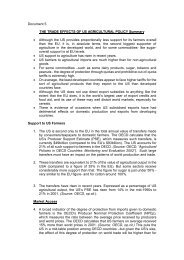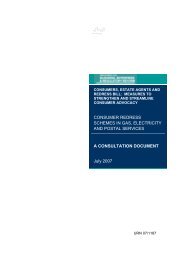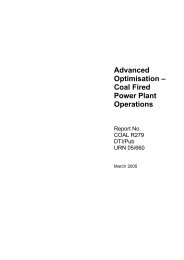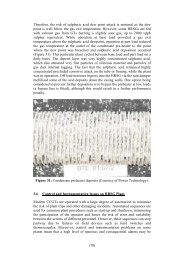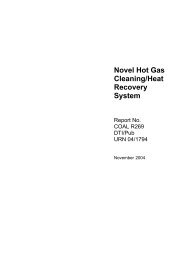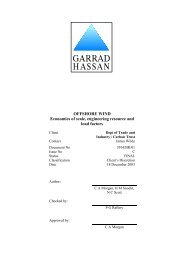Photovoltaics in Buildings A Design Guide - DTI Home Page
Photovoltaics in Buildings A Design Guide - DTI Home Page
Photovoltaics in Buildings A Design Guide - DTI Home Page
You also want an ePaper? Increase the reach of your titles
YUMPU automatically turns print PDFs into web optimized ePapers that Google loves.
34<br />
Figure 4.3<br />
Unit electricity cost<br />
Figure 4.3 shows a graph of the notional unit cost of electricity.<br />
The unit cost of all PV electricity produced falls with <strong>in</strong>creas<strong>in</strong>g array size<br />
because of economies of scale. The cost of the electricity produced and<br />
used on site <strong>in</strong>itially falls (Zone A) because of economies of scale but as the<br />
array size gets larger it is likely that all the electricity cannot be used on site<br />
and so more will be exported. S<strong>in</strong>ce this electricity is not bought back at<br />
cost, the unit price of electricity used on site rises (Zone B).<br />
In practice, the form of the curve and the po<strong>in</strong>t of ‘m<strong>in</strong>imum’ cost will depend<br />
on the specific PV <strong>in</strong>stallation. An approach based on siz<strong>in</strong>g for the ‘m<strong>in</strong>imum’<br />
cost, Cm<strong>in</strong>, could be labelled the IMBY strategy, ie ‘<strong>in</strong> my backyard’, and<br />
represents that of a client adopt<strong>in</strong>g a ‘rational’ approach to their PV<br />
<strong>in</strong>stallation. More altruistic clients who wished to reduce CO 2 emissions for<br />
society as a whole could opt for larger arrays.<br />
A start to a solution is to exam<strong>in</strong>e the load pattern. If we consider a build<strong>in</strong>g<br />
with a somewhat higher base power demand <strong>in</strong> w<strong>in</strong>ter than <strong>in</strong> summer (as is<br />
likely to be the case <strong>in</strong> naturally ventilated offices), then siz<strong>in</strong>g the array to<br />
meet the summer base load will tend to ensure that the w<strong>in</strong>ter output (when<br />
the array output is less) will also be used on site. This is an array size which<br />
will export little energy and so is likely to be <strong>in</strong> Zone A.



